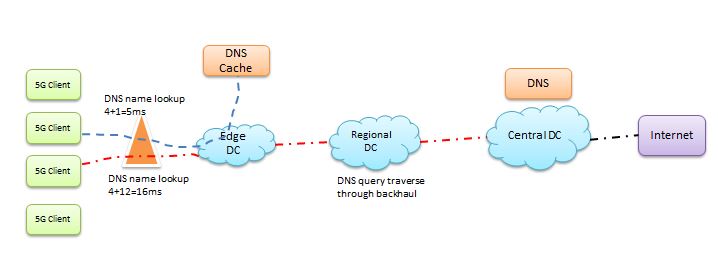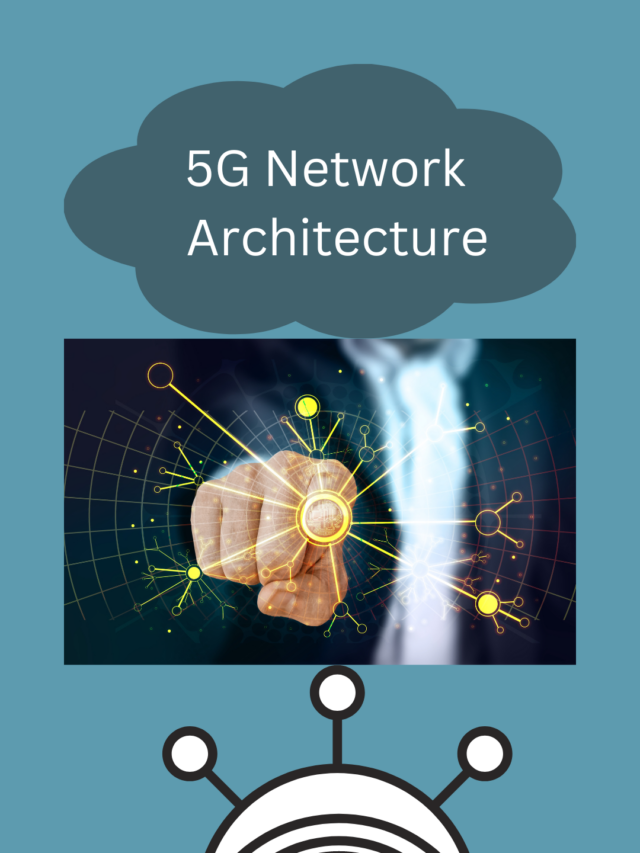DNS in 5G
DNS is domain name systems which maintain IP address and domain name. DNS systems return server IP address to the client, so that it can communicate with server.
We are seeing a lot of talk and discussion regarding cloud native 5G core architecture, various 5G RAN architecture and IP Transport network architecture. But DNS is being ignored in the 5G architecture. 5G services may not fulfil its promises without proper consideration of DNS.
Key use cases of 5G
- Enhanced Mobile Broadband (eMBB) :
eMBB service is mainly focused on high data rates and high mobility up to 500 kmph.
- Massive Machine Type Communications (mMTC) :
mMTC service is mainly focused on high device density, low data rate, long range, and low cost.
- Ultra-Reliability and Low Latency Communications (uRLLC):
uRLLC service is mainly focused on applications requiring low data rate, but highly available and responsive (low latency) networks.
4G vs 5G performance, latency and connection density summary
| 4G | 5G | |
| Average Data Rate | 25Mb/s | 100Mb/s |
| Peak Data Rate | 150Mb/s | 20,000Mb/s |
| User-Plane Latency (Air Interface) | 50ms | 1ms (uRLLC) – 4ms (eMBB) |
| Connection Density | 2000/km2 | 1,000,000/km2 |
We can see latency is key requirement for delivering most of the 5G use cases.
Why DNS is critical for 5G network services?
The DNS role in the network is always critical for overall network performance. Network performance will be worst if DNS is taking time for domain resolution. Specially, in 5G network where latency is the critical requirement, DNS performance should be best in class to achieve these critical latency requirements.
DNS latency is overlooked in 4G because there was no strict latency requirement if RAN guarantee 50ms latency. But scenario is different for 5G where the user plane latency guarantee for the air interface is between 1ms (uRLLC) and 4ms (eMBB). Latency will increase in case of 5G core deployed in central location. Obviously more distance will introduce more latency.
Impact analysis of DNS latency on the eMBB use case
- Air interface latency is around 4ms
- Assume a highly efficient DNS service that delivers results out of a cache for a total internal latency of 1ms
- DNS located centrally in the core of the network
- Assume an average distance from the cell tower to the DNS service of 500km
- Assume an equipment latency of 2ms (includes all hops)
- Network latency between cell tower and DNS service is approx. 11ms (based primarily on distance, speed of light etc.)
- Additional latency introduced by DNS is 12ms
Here additional latency 12ms is 3X of latency introduced by air interface. So, total 16ms latency introduced when a user, application, IoT device or M2M device trying to make connection, resulting non-realistic user experience.
Impact analysis of DNS latency on the uRLLC use case
Impact of DNS latency is even more critical for uRLLC use case. In this case additional latency 12ms is 12X of latency introduced by air interface. So, total 13ms latency introduced when a user, application, IoT device or M2M device trying to make connection, resulting non-realistic user experience.
What is the solution?
- DNS service should be deployed as much closer to user. Normally, DNS are deployed at central or regional data center.
- Edge computing deployment model shall eliminate DNS latency and improve user experience.

Caching, CDNs and Delivering Fast Local Content
- In the enhanced Mobile Broadband (eMBB) use case, user must experience live streaming without any delay and buffering.
- Network operator is also wanted to save backhaul link capacity that may be used to serve content from the core location.
- Serving content from user location not only save backhaul bandwidth but also improve performance and reduce latency. User experience will also improve.
- This can be achieved through partnering with content provider and deployment their CDN server in the operator edge location itself.
- Most of the CDN deployment uses DNS to provide user location information based on GeoIP database which map IP with location. Content is delivered locally to the user based on source IP address. Another method of getting location information is providing information client-subnet in DNS query.
- The more granular location information will serve content from local location.
- In ideal condition, we can assume DNS and CDN services are provided through every gNodeB location.
Other DNS key role in 5G network
DNS is crucial for Security and Privacy.
Anyone who is monitoring DNS network and see DNS lookup and IP details provided to user. This could lead to privacy issue and MITM attack. Solution is to implement DNS encryption and DNSSEC.
Virtualization, Orchestration & Control Plane Requirements for DNS
Cloud native, high performance and highly scalable DNS is the requirement for 5G.
IoT and Malware Filtering
There will be billions of IOT devices connected to 5G networks. These are very small devices and too much vulnerable. These devices are not capable of having anti-virus. Operator has to protect it somehow. Operator has to send alert to the end user if any devices are infected.
There are two approaches to protect these devices, one is DPI (deep packet inspection) solution which is expensive and complex to deploy. Another approach is DNS based solution where DNS server itself validate each and every DNS query and block connection with known C2 (Command and Control)server.
5G DNS Architecture

5G DNS requirements
- Low Latency:
- High Localized Cache-Hit Ratio and CDN Support
- Encryption
- Cloud-native, Orchestration & Control Plane Functionality
